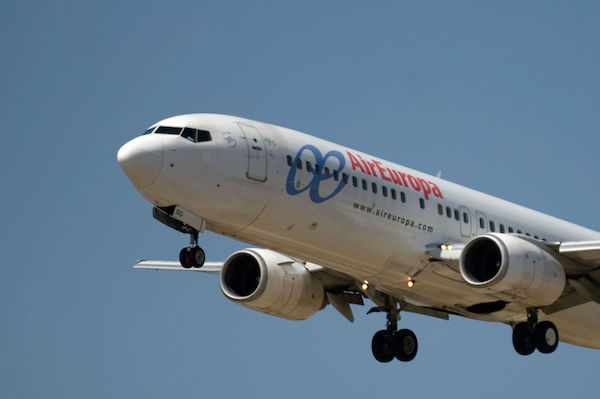On Monday, July 1st, an Air Europa flight bound for Uruguay was forced to make an emergency landing in Brazil due to severe turbulence, which resulted in 40 injuries, with several passengers suffering neck and skull fractures.
The airline stated that flight UX045 was a Boeing 787-9 Dreamliner carrying 325 people, flying from Madrid, Spain to Montevideo, Uruguay. The aircraft had to land in Natal, Brazil for the passengers to receive medical treatment.
According to reports from The New York Times, 36 passengers were treated for injuries and shock, with 23 of them being taken to hospitals. While most of the injured passengers suffered minor injuries, some fell from their seats, sustaining injuries to their head, neck, and chest.
The aircraft had been flying over the Atlantic Ocean for over four hours when it encountered severe turbulence.
The Brazilian health department dispatched 15 ambulances to receive the passengers upon landing of flight UX045 in Natal.
The Secretariat of the Rio Grande do Norte state government in Natal reported on Tuesday, July 2nd, that a total of 40 passengers were taken to hospitals, with 4 of them being admitted to the intensive care unit.
Videos and photos from the incident show damage to overhead storage bins, missing ceiling panels above the cabin aisle, and bloodstains on some seats.
Reuters reported a man named Stevan saying, “It was a very scary feeling. We thought we were going to die there.” He only disclosed his first name.
Air Europa is a leading Spanish airline. In a statement, the airline mentioned that the passengers who were not hospitalized flew to Montevideo later on Monday. The airline apologized for the inconvenience caused to passengers and wished the injured passengers a speedy recovery.
There is no evidence indicating that the injuries to the passengers on flight UX045 were due to a safety incident or technical malfunction.
Turbulence is caused by rapid and irregular airflow in the atmosphere. Generally, severe turbulence often occurs in high-altitude mountainous areas, along ocean currents, and other regions. The severity of turbulence’s impact on passengers also depends on factors such as flight speed, wing area, and anti-turbulence design.
While severe turbulence is relatively rare, the Air Europa incident is one of the many incidents that have garnered attention in recent months.
In May, a Singapore Airlines flight encountered severe turbulence, injuring over 70 passengers and resulting in one fatality, forcing the flight to divert to Thailand. The deceased passenger was a 73-year-old British man, believed to have died from a heart attack. The Boeing 777 jet descended approximately 1,828 meters within a few minutes.
A few days later, a Qatar Airways flight to Dublin, Ireland experienced turbulence, causing injuries to 12 passengers.

